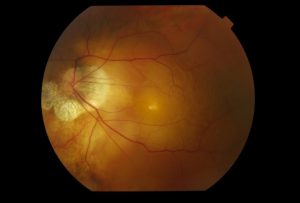SURGICAL RETINA EPIRRETINIAN MEMBRANES AND MACULAR HOLES
RETINAL DETACHMENT
What is a retinal detachment?
The retina is a neurological tissue that covers the eye inside and is responsible for capturing the images and transmitting them to the brain through the optic nerve for processing. A retinal detachment consists in the separation of this layer from the wall of the eye.
What are the alarm symptoms of a retinal detachment, can it be prevented?
If you perceive in the field of vision myosopsies or “flies” accompanied by flashing lights, you should consult an ophthalmologist, as these are the main symptoms of a retinal detachment. The vitreous gel, when detached, pulls from the retina, causing tears or holes. If these lesions are detected early they can be treated with laser, however if the retinal detachment progresses the only option will be to resort to surgery.
Can a retinal detachment be operated?
Retinal detachments can be intervened by different techniques, external or scleral, using silicone rings that are sutured to the wall of the eye and vitrectomy. Sometimes they combine both. Generally, at the end of the operation, the ophthalmologist leaves gas inside the eye to keep the retina in place while the laser heals so it is very important to maintain the head position indicated by the doctor the days after the intervention. It should also be taken into account that it is contraindicated to fly while your eye is full of gas, because it could expand and cause a sharp increase in eye pressure.

Desprendimiento de retina secundario a agujero macular


